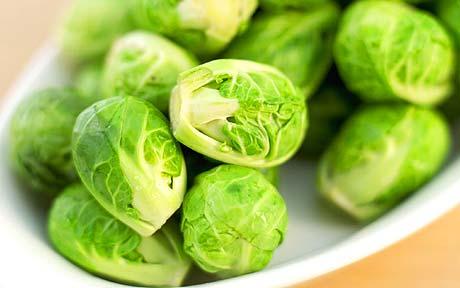Eating Low-Glycemic Vegetables For Weight Loss

Many people are not aware that there are actually plenty of health benefits of eating low-glycemic vegetables. In addition, adding in more low-glycemic vegetables can help you to lose weight, and finally put you on the fast track to shedding those extra pounds effortlessly. Furthermore, for those that have certain health conditions like diabetes, following a low glycemic type of diet will be crucial.
In today’s modern diet, many of us are facing obesity, and it tends to be rising in even our children. That is due to the fact that not everyone is aware of the many health benefits they could be receiving simply with a few tweaks to their own diets. With that said, we are actually talking about taking a closer look at the health benefits of eating low-glycemic vegetables.
For many people they are not even aware that not all vegetables will have the same type of glycemic index. For example, a red potato, might be a vegetable, but it can raise blood sugar levels very fast, while eating a white small potato might not have the same effect for the levels, and thus would be classed as a low-glycemic type of vegetable. Keeping that thought in mind, for those that are wanting to lose excess fat, they too will want to pay closer attention to the types of fruits, and vegetables that they are consuming. While they all do have different vitamins, and healthy mineral aspects to them, they could actually be stopping your weight loss efforts if too many of the wrong types are being consumed.
A good rule to follow to help determine if a vegetable is on the low glycemic index, would be to study some of the free charts online. Many of them will list common foods, but if a vegetable has a higher amount of fiber in it, it not only will keep you feeling fuller for a longer period of time, it also will typically be on the lower index level. On the other hand, if you cook your vegetable, you could actually be causing yourself more harm than good. Some vegetables like carrots, when eaten raw, are on the low level, but if you cook them, it will raise that glycemic number up to the 41 index, which now means it is now in the medium index level.
Many times, people think “well I will just start eating any types of vegetables, and fruits” and this will automatically help me to start losing weight. Keep in mind, while it is true that eating low-glycemic vegetables can help you lose weight, you must also pair them up with the right amount of proteins, and proper fats like olive oil, or coconut oil, or else you could be defeating the entire purpose. The best way to look at the overall health benefits to eating low glycemic vegetables, would be to add in the dark leafy greens, like Kale, spinach, broccoli, cabbage, and even lettuce all which will be low glycemic, and thus will not raise your blood sugars rapidly.
However, with those same selections you want to pair it with other proteins within the same meal like a piece of fish, salmon is a good choice, and perhaps drizzle some olive oil over your salad made with lettuce, and tomato to get in a good type of fat.
In addition, for those that have medical issues such as being a diabetic, eating in this fashion is actually mandatory. However, that is not actually a bad thing, considering all the minerals, and vitamins that many of these low-glycemic vegetables can provide in nutrients for the body. Often times, if caught early enough, many patients who have been diagnosed with diabetes can possibly reverse it by making many of these food changes, and thus adding in more of these certain vegetables that we mentioned.
Low-Glycemic Vegetables
- Artichokes
- Artichoke hearts
- Asparagus
- Bamboo shoots
- Bean sprouts
- Broccoli
- Brussels sprouts
- Cabbage (green, bok choy, Chinese)
- Cauliflower
- Celery
- Cucumber
- Daikon
- Eggplant
- Leeks
- Lentils
- Beans (green, kidney, garbanzo)
- Greens (collard, kale, mustard, turnip)
- Green Beans
- Mushrooms
- Okra
- Onions
- Peppers
- Radishes
- Rutabaga
- Salad greens (chicory, endive, escarole, iceberg lettuce, romaine, spinach, arugula, radicchio, watercress – basically, all dark leafy greens!)
- Squash
- Sugar snap peas (peas/pea pods)
- Swiss chard
- Tomato
- Water chestnuts
- Watercress
- Zucchini
While we listed several choices here, please keep in mind, that this is not the completed list, and you should research the low glycemic index chart to help give you a more variety of choices when planning your own meals.
Finally, even if you only change one food item on your plate, to instead add in one, or more of these particular vegetables instead, it surely will get your body in better health, and thus help with your weight loss effort.
